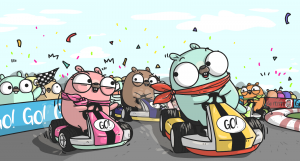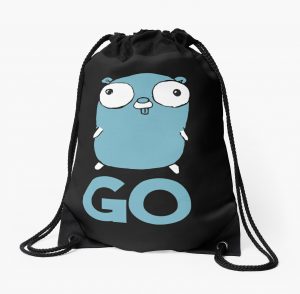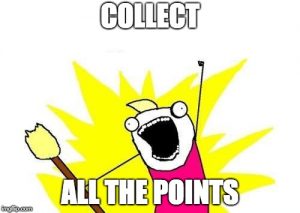Hacktoberfest: Gitlab Artifacts
Hacktoberfest is upon us! This month I’m hacking on small projects each week and sharing them.
Background
Gitlab is a great alternative to GitHub. One of the main features I find is the ability to have unlimited private repositories for free. This lets me work on things without having them publicly exposed until I’m ready for them to be. In addition to private repositories, it also has a private Docker Registry you can store your Docker images in. GitLab also has other built in CI/CD capabilities like secrets that are passed to the CI/CD orchestration file. GitHub has CI/CD capabilities too, but I feel like GitLab seems less involved for setting it all up.
All of my CI/CD jobs are orchestrated in a gitlab-ci.yml file that sits in the repository. Couple this with a self-hosted GitLab Runner with Docker installed and I have a true CI/CD solution where tagging master triggers an automatic build of the tagged code, publishing the Docker image built during this job, and a deployment of that Docker image to a container (replacing the existing on if present). While this does require some thought into how to persist data across deployments, it does make it very easy for automatic deployments. In the event something does go wrong (and it will) you can easily re-run any previous build making rollbacks extremely simple with a one click solution. Repeatability for the win!
Artifacts
So, this week I was attempting to learn the Artifact system of the GitLab API. Instead of mounting a directory to pass files between jobs, GitLab has an Artifacts API that allows GitLab to store (permanently or temporarily) any number of artifacts defined in a successful pipeline execution. These artifacts are available via the web and the Artifacts API. I have several Go projects that could benefit from cross-compiling the binaries. Why not store these compilations so they are easy to grab whenever I need them for a specific environment? As an added benefit, after compiling once, I could deploy to various environments using these artifacts in downstream jobs. So, I jumped at this chance and found it less than ideal.
The Job
There is a Job API document defining how to create artifacts within a pipeline. It looks as simple as definining artifacts in your gitlab-ci.yml file:
<br>
artifacts:<br>
paths:<br>
- dist/<br>
Creating artifacts is the easiest bit I came across. This will auto upload the contents of the dist folder to the orchestration service which will make it available on the GitLab site for that specific job. Easy peasy!
Getting those artifacts to a downstream job is pretty easy as well if you keep in mind the concept of a build context and have navigated GitLab’s various API documents. Thankfully, I’ve done that boring part and will explain (with examples) how to get artifacts working in your GitLab project!
The Breakdown
The API documentation that shows how to upload artifacts also shows how to download artifacts. How convenient! Unfortunately, this is not within the framework of the gitlab-ci.yml file. The only API documentation you should need for multi-job single-pipeline artifact sharing is here: YAML API. For other uses (cross-pipeline or scripting artifact downloads) you can see the Jobs API (warning: cross-pipeline artifacts are a premium only feature at the time of writing).
Looking at the Dependencies section the dependencies definition should be used in conjunction with artifacts. Defining a dependent job will cause an ordered execution and any artifacts on the dependent job will be download and extracted to the current build context. Here’s an example:
<br> dependencies:<br> - job:name:<br>
So, what’s a build context? It’s the thing that’s sent to Docker when a build is triggered. If the artifacts aren’t part of the build context, they won’t be available for a Dockerfile to access (COPY, etc).
Here’s the gitlab-ci.yml example:
<br>
stages:<br>
- build<br>
- release</p>
<p>build-binary:<br>
stage: build<br>
image: golang:latest<br>
variables:<br>
PROJECT_DIR: "/go/src/gitlab.com/c2technology"<br>
before_script:<br>
- mkdir -p ${PROJECT_DIR}<br>
- cp -r $CI_PROJECT_DIR ${PROJECT_DIR}/${CI_PROJECT_NAME}<br>
- go get github.com/tools/godep<br>
- go install github.com/tools/godep<br>
- cd ${PROJECT_DIR}/${CI_PROJECT_NAME}<br>
- godep restore ./...<br>
script:<br>
- ./crosscompile.sh<br>
after_script:<br>
- cp -r ${PROJECT_DIR}/${CI_PROJECT_NAME}/dist $CI_PROJECT_DIR<br>
tags:<br>
- docker<br>
artifacts:<br>
paths:<br>
- dist/<br>
expire_in: 2 hours</p>
<p>publish-image:<br>
stage: release<br>
image: docker:latest<br>
services:<br>
- docker:dind<br>
only:<br>
- "master"<br>
variables:<br>
DOCKER_HOST: tcp://docker:2375/<br>
DOCKER_DRIVER: overlay2<br>
before_script:<br>
- "docker login -u $CI_REGISTRY_USER -p $CI_REGISTRY_PASSWORD $CI_REGISTRY"<br>
script:<br>
- docker build -t ${CI_REGISTRY_IMAGE}:${CI_COMMIT_REF_NAME} --pull $CI_PROJECT_DIR<br>
- docker push ${CI_REGISTRY_IMAGE}:${CI_COMMIT_REF_NAME}<br>
after_script:<br>
- "docker logout ${CI_REGISTRY}"<br>
tags:<br>
- docker<br>
dependencies:<br>
- build-binary<br>
And the crosscompile.sh
<br>
#!/bin/sh<br>
echo "Cross compiling alexa-bot..."<br>
for GOOS in darwin linux windows; do<br>
for GOARCH in 386 amd64; do<br>
echo "Building $GOOS-$GOARCH"<br>
export GOOS=$GOOS<br>
export GOARCH=$GOARCH<br>
go build -o dist/alexa-bot-$GOOS-$GOARCH<br>
done<br>
done<br>
echo "Complete!"<br>
In this example, we cross-compile a Go binary and artifact it in the build-binary job before executing the public-image job (which is dependent on build-binary). This downloads and extracts the artifacts from build-binary and sends the project directory (including the downloaded artifacts) as the build context to Docker when building the Dockerfile. Let’s look at the Dockerfile:
<br> FROM alpine:latest<br> RUN apk add --no-cache --update ca-certificates<br> COPY dist/alexa-bot-linux-amd64 /bin/alexa-bot<br> RUN chmod +x /bin/alexa-bot<br> EXPOSE 443<br> # Run the binary with all the options<br> ENTRYPOINT [ "alexa-bot -c " + $CLIENT_ID + " -s " + $CLIENT_SECRET + " -x " + $SERVER_SECRET + " -t " + $PRODUCT_TYPE_ID + " -n 123 -v " + $VERSION + " -r " + $REDIRECT_URL + " -z " + $TOKEN_URL ]<br>
You can see here that the Dockerfile starts with Alpine Linux as the base Docker image, updates the CA certificates then copies the dist/alexa-bot-linux-amd64 binary from the Docker build context to the compiled Docker image then gives it executable permissions. The rest of the file sets up the port the binary will listen to and passes the configurations to the image.
Once this Docker image is pushed to GitLab’s private repository, the Docker image is available to run (provided with some environment configurations)!
Conclusion
All in all, this seems to work out great for single pipeline builds. When you get into multi-pipeline builds things get even trickier. I found that the artifacts system didn’t quite meet my requirements and I opted for condensing builds and not artifacting the compiled binaries. I could, however, trigger a pipeline that cross-compiles and artifacts the compiled binaries and run a second pipeline that also cross-compiles the binaries (duplicated work) then creates an image. Ultimately, I didn’t really care about the artifacts as my purpose was always to create the Docker images. As usual, your mileage may vary!


